The Challenge of Russell Wilson in Seahawks' 2021 Offense
We have only viewed two games of the NFL season and yet we have already seen the frustrating greatness of Seahawks quarterback Russell Wilson. In his tenth year of NFL football, Wilson is the same player—new offensive coordinator or not.
The basic stats look great, full of the efficiency that head coach Pete Carroll desires. Over the first two weeks of the 2021 campaign, Wilson has: 597 passing yards, a 74.1% completion percentage, 11.1 yards per attempt and six passing touchdowns.
The box score numbers also suggest that Wilson’s environment has made his task more difficult.
Seattle’s run game at Indianapolis was so effective that the offense was able to rush more. On 22 attempts, the Seahawks put up 131 rushing yards—a 5.95 yards per carry average.
The contrast with the Week 2 run game is therefore strong.
Versus Tennessee, Seattle ran on just 15 plays for a paltry 61 yards—a total which is inflated by Alex Collins’ 25-yard run in the second quarter. Removing Collins’ play puts the Seahawks at 14 runs for a rough 2.6 yards per carry. On the flip side of that, they called passes on 34 plays, despite being in a situation—a 14-point lead heading into the fourth quarter—where you would expect an offense to run more.
Pass protection-wise, Wilson has already been sacked six times. Sacks, however, are a heavily quarterback-influenced stat. Indeed, the pass protection has not been a peak-Tom Cable, horrendous beast. Instead, Wilson has held the ball in certain situations that has seen him get taken down. This brings us nicely to Wilson’s early struggles—the challenges that first-year play-caller Shane Waldron is dealing with.
The passing game has suffered from an all-too-familiar explosive-or-bust nature, lacking much-needed rhythm. This is supported by the data. Per Pro Football Focus’ Kevin Cole, the Seahawks’ EPA per dropback places eighth in the league while their dropback success rate ranks 27th. As Cole put it, the “offense is heavily reliant on big plays right now.”
When these big plays don’t arrive, Seattle stops scoring points.
In the Colts game, the Seahawks put up six explosive plays and 21 points in the first half of action. They then had zero explosives in the third quarter and zero points. Ending the game with a victory meant the offense’s second half ineffectiveness was soon forgotten. Then came the Titans.
Hosting Tennessee, Seattle’s offense was even more reliant on explosives, scoring so explosively that it later became an issue for the attack. Tennessee’s time of possession for the game was 42 minutes and 33 seconds; Seattle 22 minutes and 42 seconds. In the second half, the Titans had the ball for 19 minutes and 34 seconds; the Seahawks just 10 minutes and 26 seconds.
Removing the last play of the encounter (a quick throw to Tyler Lockett versus prevent defense) and Freddie Swain’s gift of a 68-yard touchdown versus broken coverage, the Seahawks ran 22 plays for a pathetic 55 yards. Seattle picked up only four "real" (discounting the end-of-game) first-downs in the second half.
The Athletic’s Michael-Shawn Dugar tweeted out TruMedia’s splits for the Seahawks' attack over two games. In the first half of these matchups, they rank first in EPA per play, second in points per game and first in points per drive. In the second period, the Seahawks are 23rd in EPA per play, 29th in points per game and 29th in points per drive.
Waldron, so far, has been unable to get Wilson comfortable in hitting certain windows over the middle. These passing lanes have been a crucial element to the past offensive success that Waldon has experienced in his coaching career.
Take this missed 2nd and 6 opportunity to hit Lockett over the middle. Lockett was visibly eager to receive the football. He settled in the zone hole and was open. Wilson rolled out on the movement pass, looked at his receiver and decided against the throw, instead choosing to scramble for 3 yards. This brought up 3rd and 3.
— Ultra Rare Tape (@UltraRareTape) September 18, 2021
Sure, the above could be a case of early-game, new-season caution and disjointedness. It was the second play of the matchup for Seattle’s offense and Wilson may have expected Lockett to make a few a more steps towards the sideline. Here’s Sam Darnold hitting a similar window over the middle:
Are we witnessing a post-Adam Gase glow-up for Sam Darnold a la Ryan Tannehill? He's been impressive thus far with 584 yards and 3 touchdowns through two games.
— Joe Fann (@Joe_Fann) September 21, 2021
He doesn't have to be Superman with a competent OC, reliable weapons and a capable defense. pic.twitter.com/FCcOBmHpAn
More egregious was Wilson’s miss of DK Metcalf on the “strike” concept. This is a core play of Waldron’s offense—or it at least used to be. A day-one install, quick-hitting play-pass has already disappeared.
The idea is that the ball is thrown in-stride to Metcalf’s 15-yard in-cut. Running it to the same side as the run fake means the play takes place quickly (for a full breakdown, read this preseason article). The linebacker flow to their coverage was somewhat window-closing and Wilson’s decision to check down to Carson proved rewarding.
— Ultra Rare Tape (@UltraRareTape) September 18, 2021
We saw “strike” in the preseason. In Las Vegas, Geno Smith completed a same-side pass to Cody Thompson
A really nice "strike" play-action concept from Shane Waldron and the #Seahawks, same-side conflict while attacking leverage. Cody Thompson with the grab. Dominick Wood-Anderson executes a nasty block on NT to sell the fake. Unfortunately: play came back pic.twitter.com/Wzy5okWyQD
— Under Zone X (Frisco)/Phoenix Check/Stick Slasher2 (@mattyfbrown) August 19, 2021
Versus the Broncos, Alex McGough hit Thompson on the away-side edition of “strike.”
Based on Shane Waldron's comments yesterday on Cody Thompson, it sounds like the WR will make the #Seahawks roster. In back-to-back weeks, the 2020 UDFA has catches on the "strike" play pass concept. This time action was away + Seattle was in 21p offset Ipic.twitter.com/5hMedzyTrv
— Under Zone X (Frisco)/Phoenix Check/Stick Slasher2 (@mattyfbrown) August 27, 2021
What is most revealing regarding “strike” is that Waldron has not yet returned to the concept following Wilson declining the Metcalf window.
Comparing Wilson’s NFL Next Gen Stats passing charts with Rams quarterback Matthew Stafford is illustrative, given Stafford plays in Sean McVay’s offense and has also faced the Colts' defense. Notice the lack of Wilson targets in the 10-20 yard range over the middle. Stafford was attempting a number of these versus Indianapolis’ largely middle field open coverages.
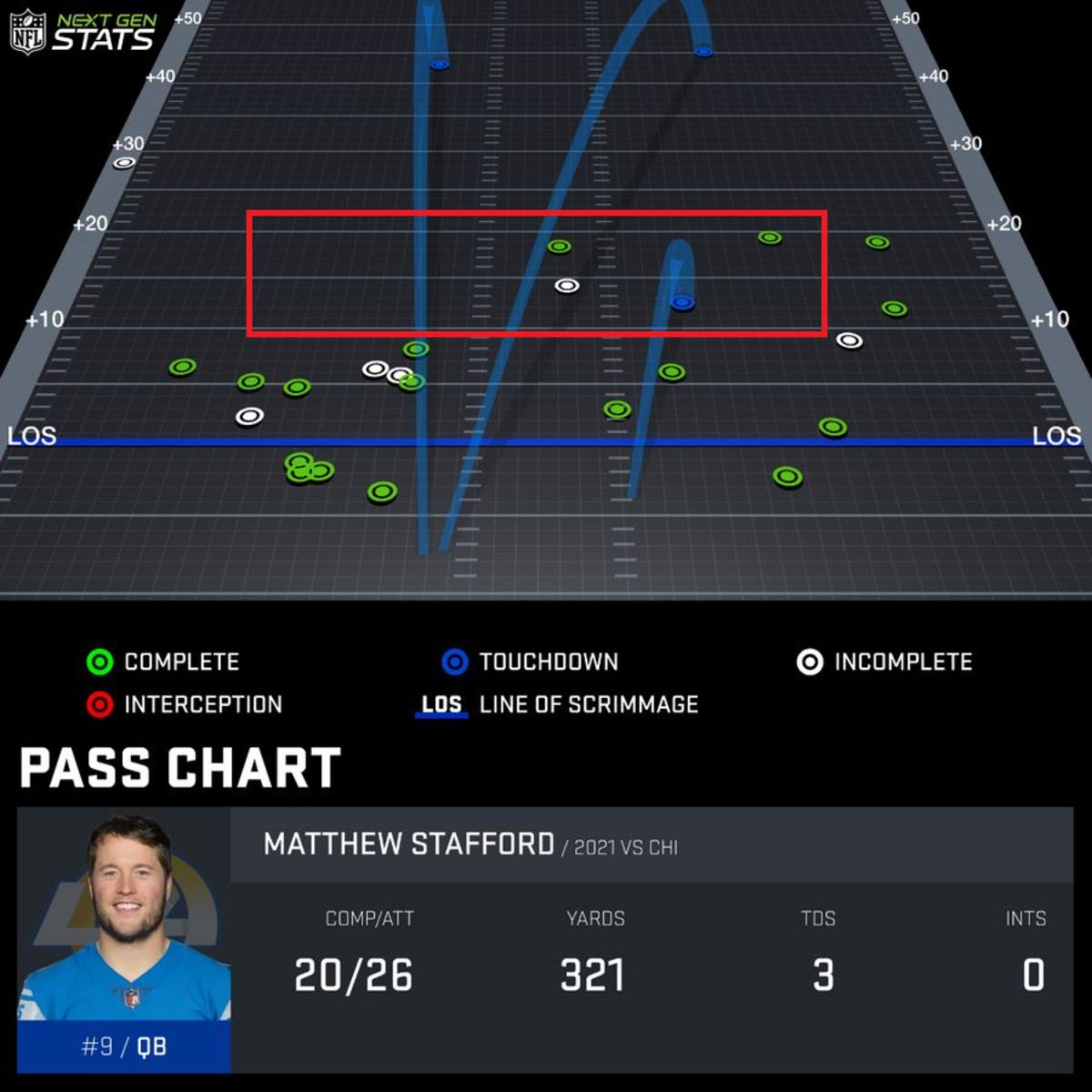
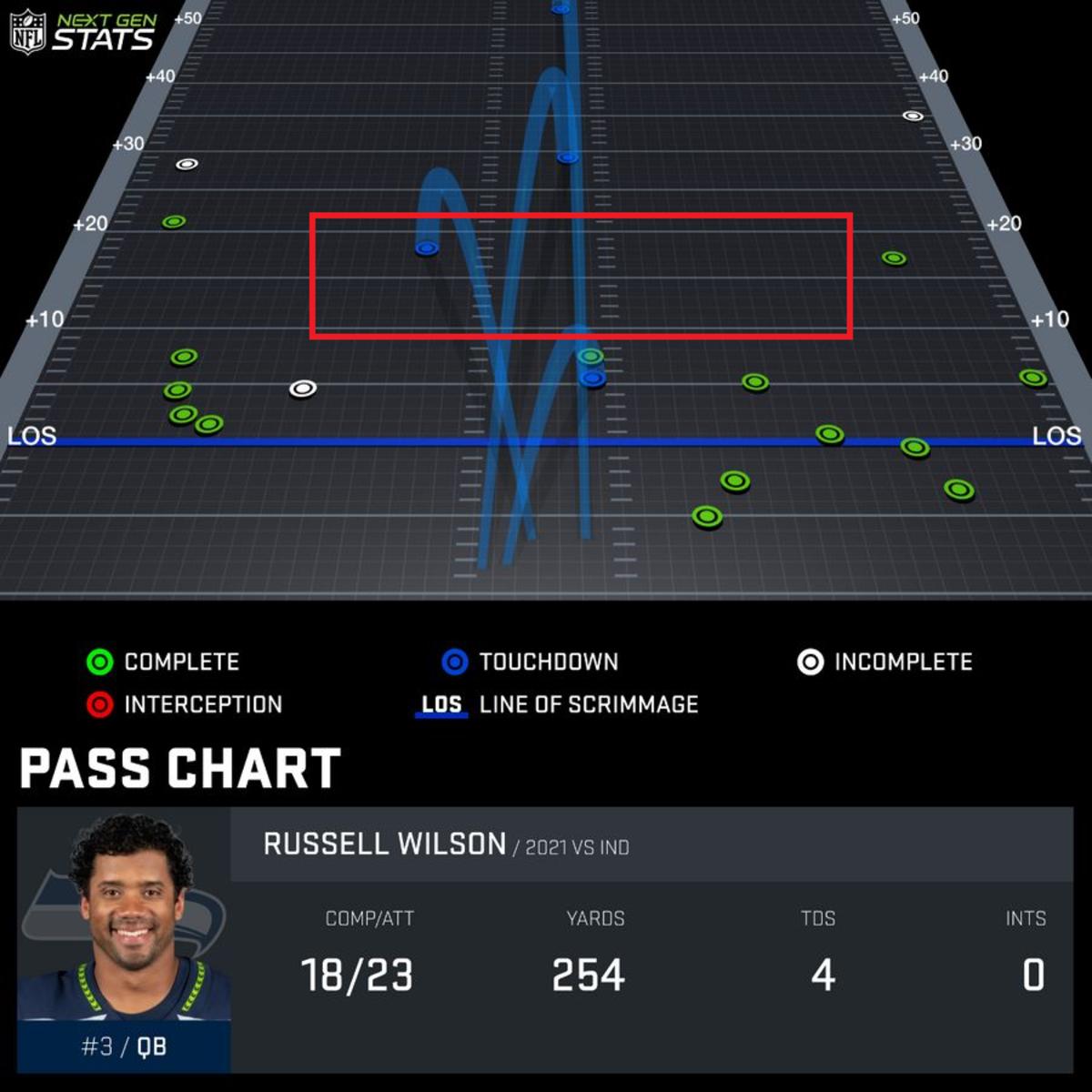
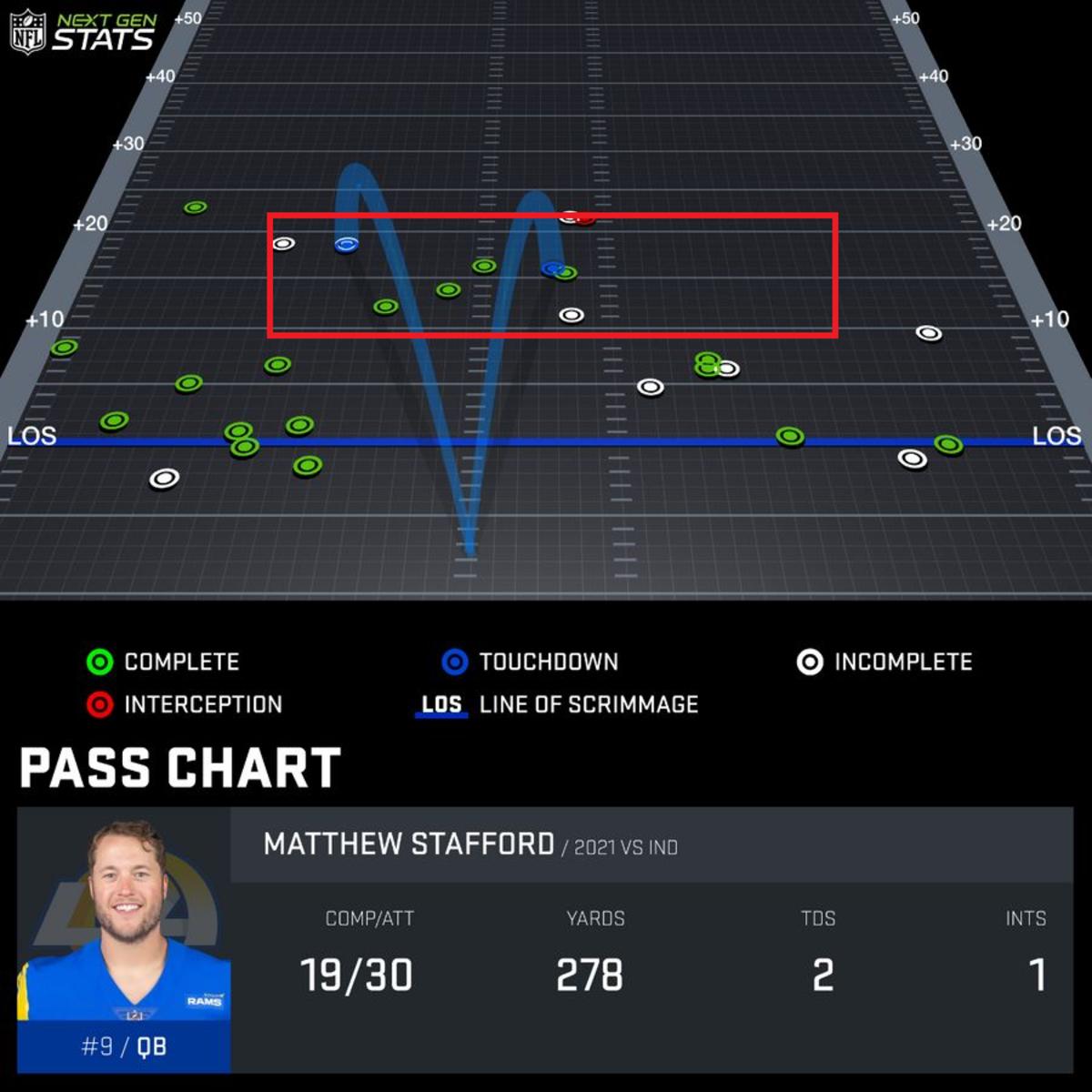
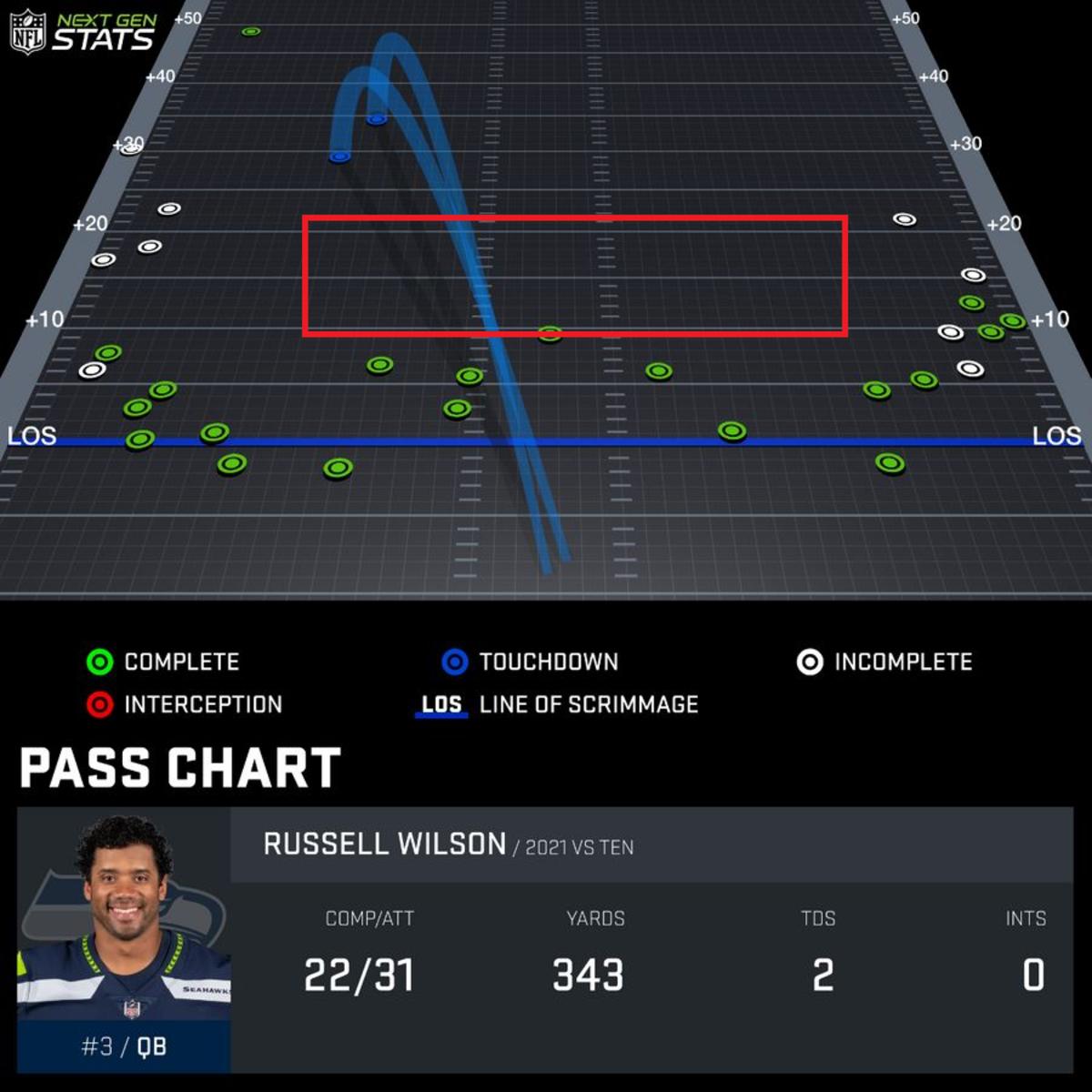
Tennessee’s defense utilized some smart tactics to slow Wilson and dig up old bones. Holding a single-high disguise pre-snap, the Titans spun into a Tampa 2 invert defense well-suited to halting bootlegs. Think cover 2 but corners in the deep 1/2 zones, a safety rotating down to close the high hole.
Changing coverage post-snap versus under center formations is intelligent, because the quarterback has his back turned to the defense if executing an under center play-fake to his running back. As the passer turns around, he is suddenly presented with a different defensive look.
This Tampa 2 invert coverage also gave Tennessee the layers required to kill bootleg passing designs. On this play, Wilson was paused throwing the comeback to Metcalf that he wanted, aware of the cloud-replacing player to the field. This feels like an overly cautious move.
Wilson worked back to the other side of the formation. Swain’s route over the middle nestled beneath the high hole safety and also in the space behind and between the linebacker zones. Wilson thought about throwing it. This would have been a sound throw given that the linebackers had their backs turned.
Instead, Wilson pump-faked and scrambled up and left, destroying his pocket to the sack.
— Ultra Rare Tape (@UltraRareTape) September 24, 2021
The first play of overtime encapsulates Seattle’s passing offense at present and Russell Wilson’s skillset.
— Ultra Rare Tape (@UltraRareTape) September 24, 2021
Pete Carroll chose to highlight this play in his Monday morning 710 ESPN Seattle radio appearance.
“That last sequence, you know, we had a play-action pass, I wish we could have controlled the ball, checked the ball down there,” shared Carroll.
Criticism of the play from the head coach does initially feel harsh. Wilson took what looked like a one-on-one shot to his potent target while a rusher was coming free down the middle.
“You know, you try to get the ball to Tyler, he’s had 180-something yards, he’s a pretty good player,” Wilson described of his decision in his Thursday press conference. “But, at the same time, you know the game happens fast, you make a decision, backed-up, didn’t want to get hit the first play, get sacked on it. So, you know, it’s one of those things that, you know, it’s, we were probably three, four inches off of completing it, you know? One of those beautiful toe taps.”
Looking at the play in detail reveals the philosophical battle taking place.
The Titans showed their single-high defense and then spun into their Tampa 2 invert, essentially double covering the sideline shot to Lockett on what was already the short side of the field. Wilson, of course, was unable to see this with his back turned to the defense. He tried the pass to Lockett.
The concept was a play-pass designed to fake wide zone, and then set the quarterback up to read the sail route, run by Metcalf, and the running back route into the flat. This imparts vertical stress on an outside space zone defender in the area, a high-to-low read. It would have beat Tampa 2 invert nicely because Lockett would run off that side of the sideline coverage and then the sail route stems like a deep crosser for the high hole safety to cut. Finally, Carson out-leverages a curl defender.
If Wilson had executed the quarterback drop as designed, he would have been able to access the Metcalf-Carson route combination in a clean pocket. However, because Wilson had decided to take a shot to Lockett, he narrowed, deepened and curtailed his drop for the sideline target. The rest of the play was unable to develop in time.
Jared Goff executing the same concept illustrates this point. Compare where each quarterback ends up using the helpful red dot for where the ball started.
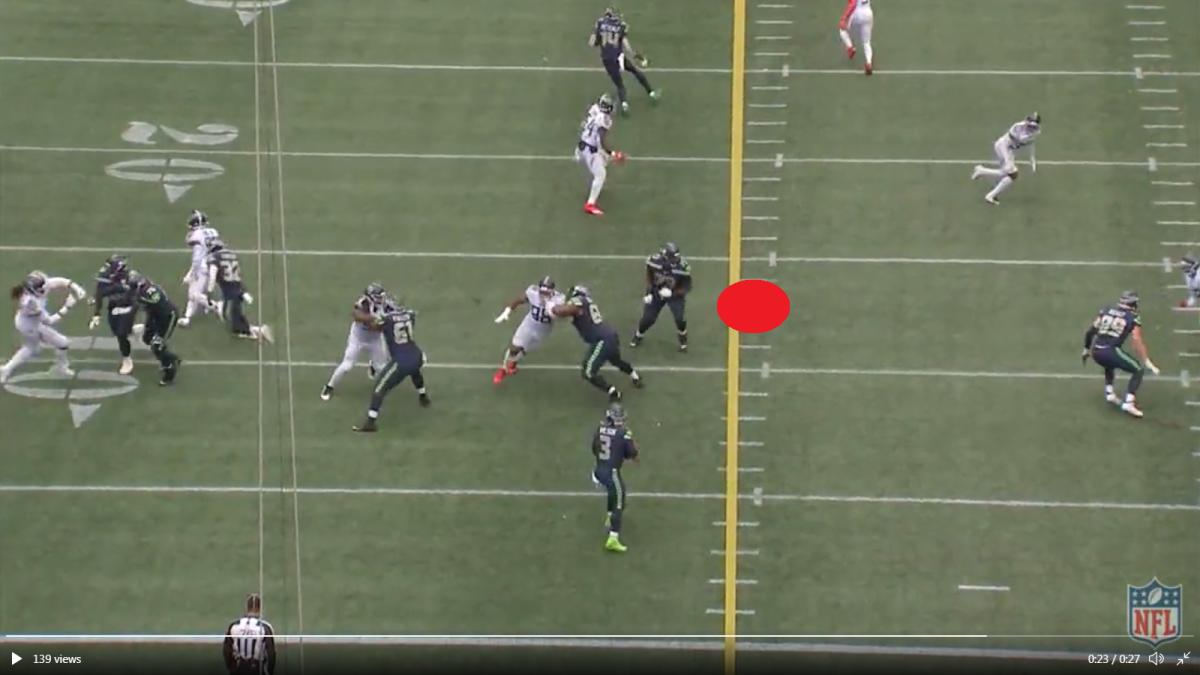
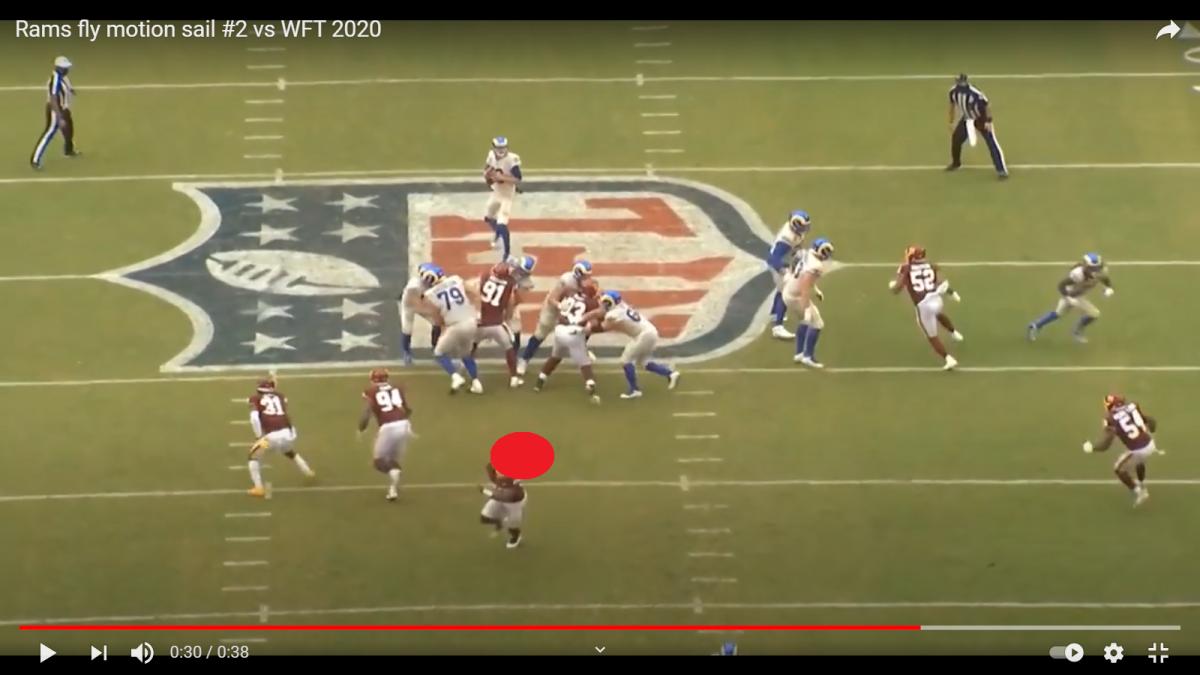
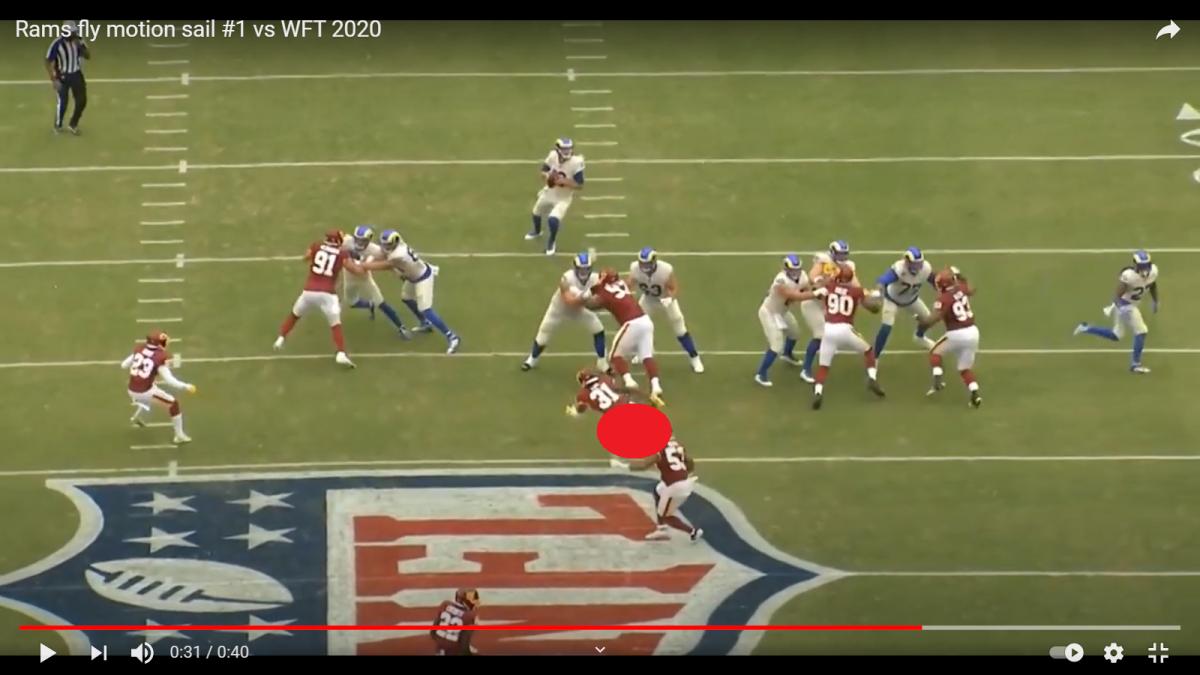
“So that sequence was the one where I wish Russ could have helped us there, you know, and just made completions for us,” Carroll continued. “We needed to just move the ball there and change the field position at least, in overtime, you know, because you’re playing field goal right there.”
Wilson’s pre-snap decision to throw the alert route to Lockett adjusted his drop to that route being the only option. Wilson pinned himself in a corner where he could not access the high-to-low combination after the defensive picture changed post-snap.
Moreover, adjusted drop or not, it can be argued that taking the low percentage shot to Lockett in a situation where the offense had zero rhythm and desperately needed a solid drive starter was not playing the situation correctly.
Wilson worrying about getting hit or sacked on the first play of overtime is concerning too. The quarterback had the pass protection to comfortably execute the called passing concept. The adjustment he made to his drop was what allowed the penetration to come through; the offensive line was blocking for a landmark that Wilson decided not to hit.
— Ultra Rare Tape (@UltraRareTape) September 24, 2021
“I think there’s a patience, but you also have to have the mentality of, you know, knowing that there’s opportunities to get down the field as well," Wilson responded to a question over Carroll's comments.
Ultimately, Wilson does not view the situation the same way as Carroll.
“I’m not gonna change my mindset, I know how to win a lot of those games, you know, we’ve done it before,” the quarterback concluded on Friday. “And we’re not gonna win every single one of them. But you believe you can. I think that’s the key for our football team, we’re always believing that we can.”
“I think just making sure we put ourselves in good positions to drive the ball right there,” offensive coordinator Shane Waldron weighed in on Thursday.
The play-caller will be caught in the middle of any re-emerging head coach-quarterback tension. Meanwhile, Waldron is busy trying to figure out how he can get once-reliable rhythm passing concepts functioning with Wilson. How will the Seahawks' offense adapt?
